Microsoft 365 collaboration tools: How to manage, share, and secure files in OneDrive

Table of contents
Collaboration plays a big part in our lives, both in and outside work. We collaborate with our colleagues across teams and departments on all sorts of projects. What does all this collaboration have in common? Content.
We collaborate on content constantly. Heck, I’m collaborating with my ShareGate friends right now on this article!
Content collaboration has become so important that it’s spawned a whole category of apps and services—Box and Dropbox, anyone? Microsoft, of course, came up with its own solution: Microsoft 365.
Microsoft 365 enables teamwork and content collaboration through a variety of products. This series of articles will focus on the ins and outs of three services that make up the backbone of content collaboration in the modern workplace:
- Part 1: OneDrive
- Part 2: Microsoft Teams
- Part 3: SharePoint
In part 1, we'll be taking a look at document sharing and collaboration with OneDrive.
OneDrive collaboration features
Let’s say you’re a member of the Contoso Electronics marketing team. You and your colleagues use Microsoft Teams as a shared collaboration space. Your manager Alexis has asked you to deliver a presentation at the upcoming team meeting. All of your marketing colleagues can access the content stored in Microsoft Teams, and you don’t feel comfortable creating a new presentation directly in your shared collaboration space.
That’s where OneDrive comes in. This one-stop-shop for storing all your personal files:
- Allows easy sharing of files inside or outside Contoso Electronics
- Is integrated with Windows File Explorer for immediate and offline access
- Enables access to your files from all your mobile devices
You start working on the presentation from your OneDrive. Like all of the content you store in your OneDrive, your new presentation will be private by default—you decide if and when it's time to share.
When that time comes, you'll have to ask yourself who you want to share the content with. If the answer is "all my colleagues," then that file doesn't belong in OneDrive anymore—it should be moved to Teams.
Wondering what is OneDrive for Business? It's your organization's powerful tool for secure collaboration with ample storage.
Sharing a document with OneDrive
You're now ready to share the presentation so your colleague Aldo can provide feedback. Sharing the presentation with Aldo from your OneDrive is incredibly easy. Just select the file and click Share:
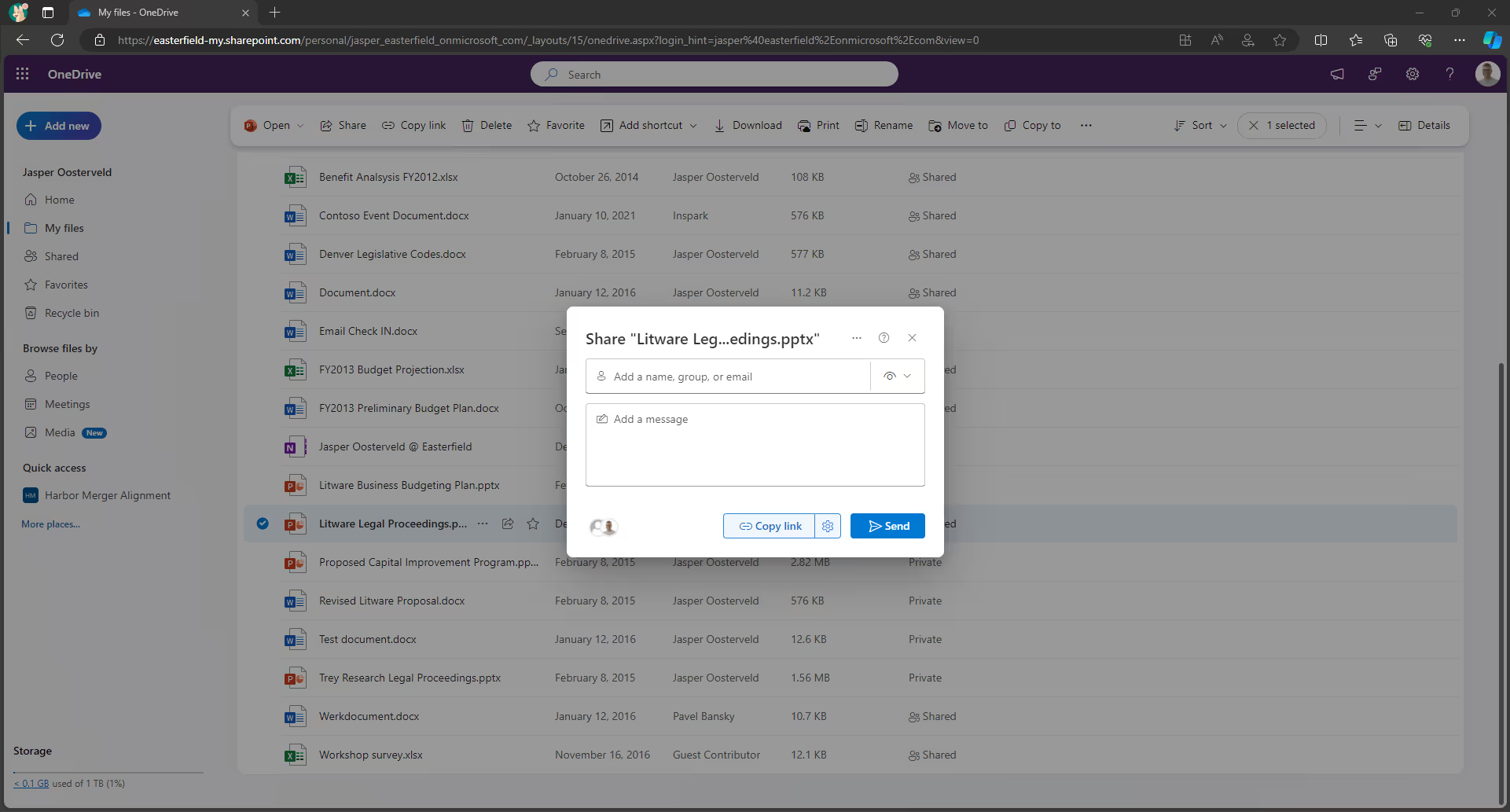
Now, it is time for a couple of decisions.
- You select the internal or external recipient
- You add a personalized message
- You select the type of link (view, edit, view, but no download) The last part is selecting the type of link:
The last part is selecting the type of link:

OneDrive link settings for shared files
Before we dive into sharing options, it's important to understand how OneDrive link settings function. When you click "Share" on a file in OneDrive, you're prompted to choose who can access the link. So, while selecting the type of link, you'll get the following options:
- Anyone: This option is only available if your SharePoint Administrator decides to turn on anonymous sharing. More on this later.
- People in Easterfield: This will allow everyone within the company to access the link. If this is applicable to your situation, you should consider moving the file to a shared collaboration space. Remember: OneDrive is your personal storage location.
- People with existing access: This option can only be selected once you’ve already shared the file with the desired recipients.
- People you choose: The link will only work for the people you specify. This is the most used sharing option within OneDrive.
Explaining these four options to business users poses a bit of a challenge for the adoption process. That’s why I prefer setting a default sharing link type. You can do this via the SharePoint administration center. There are three types of default OneDrive sharing links to choose from:
- Specific people (only the people the user specifies)
- Only people in your organization
- Anyone with the link
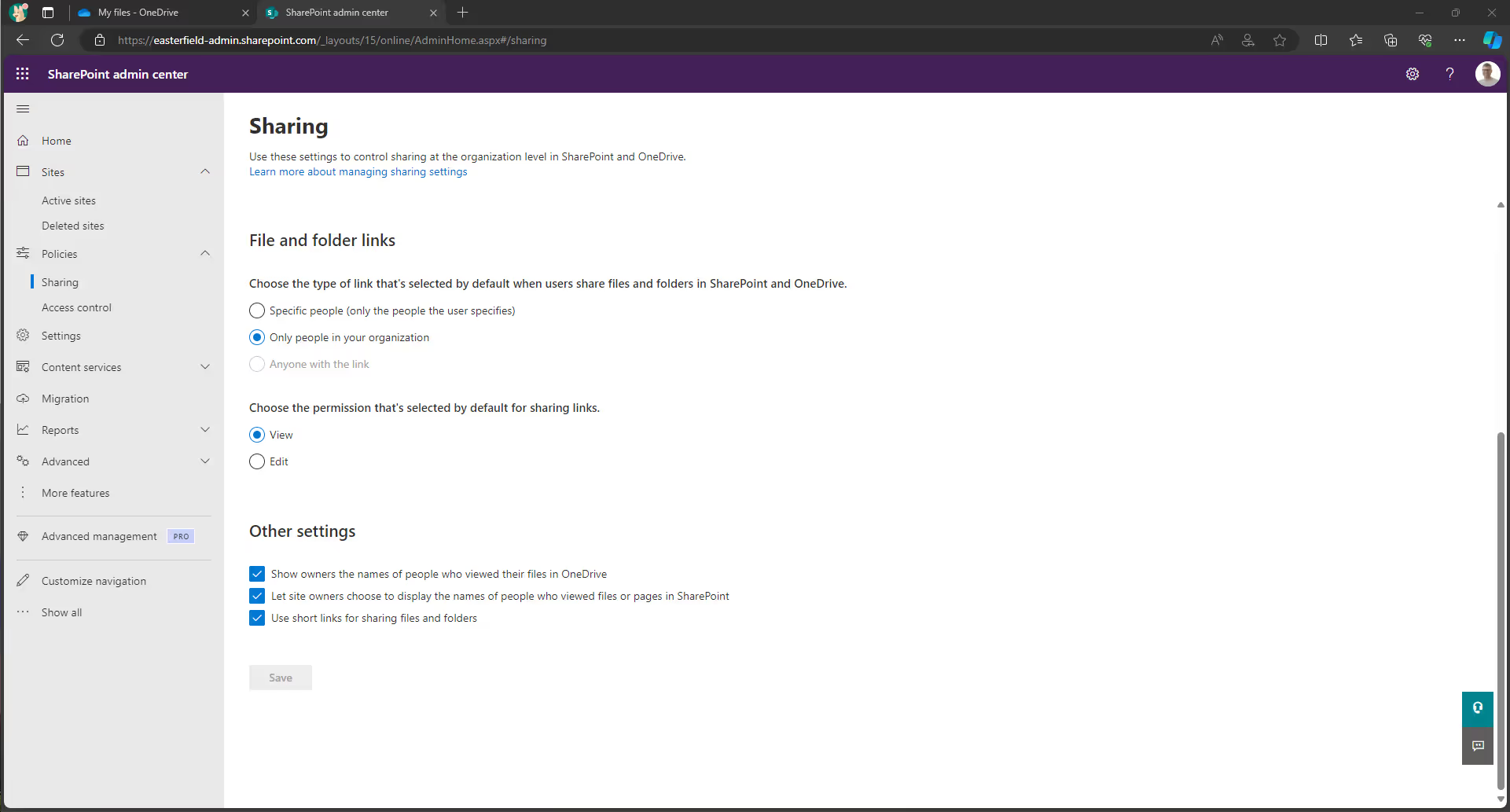
One option is missing: People with existing access. This would be my preferred default option because people are inclined to resend previously shared links to colleagues. In the absence of that option, I recommend using the Only people in your organization option.
I advise against using the Anyone option, as I can’t think of a single scenario in which you would want to let your employees share anonymous links with unknown external users. To prevent anonymous link sharing, disable the option within the Microsoft 365 administration center:
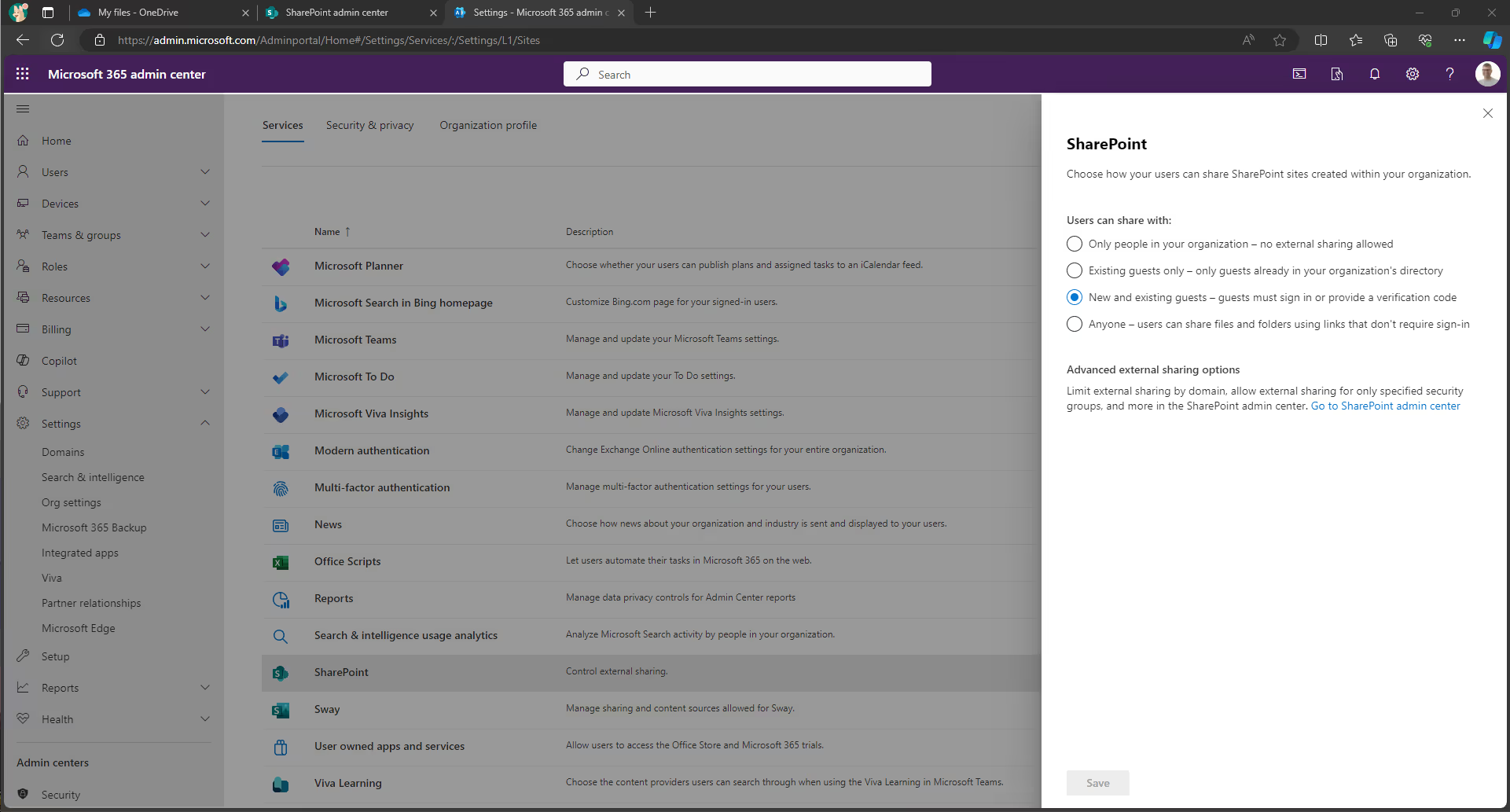
You’ve finished the first draft of your presentation, and it’s time to gather feedback from your colleagues. You decide to ask Alex for input:
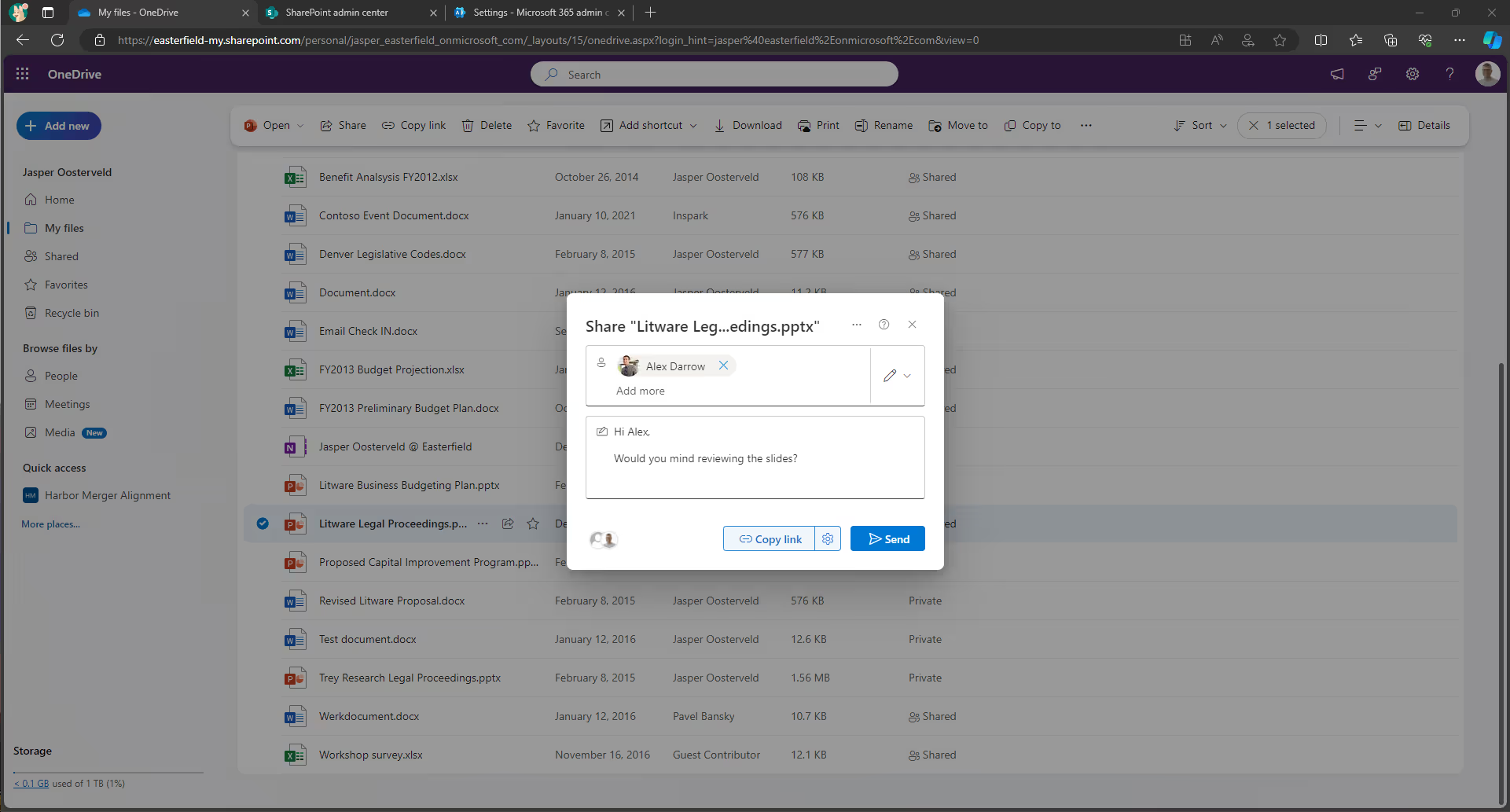
A link to the presentation will be delivered to Alex’s inbox:
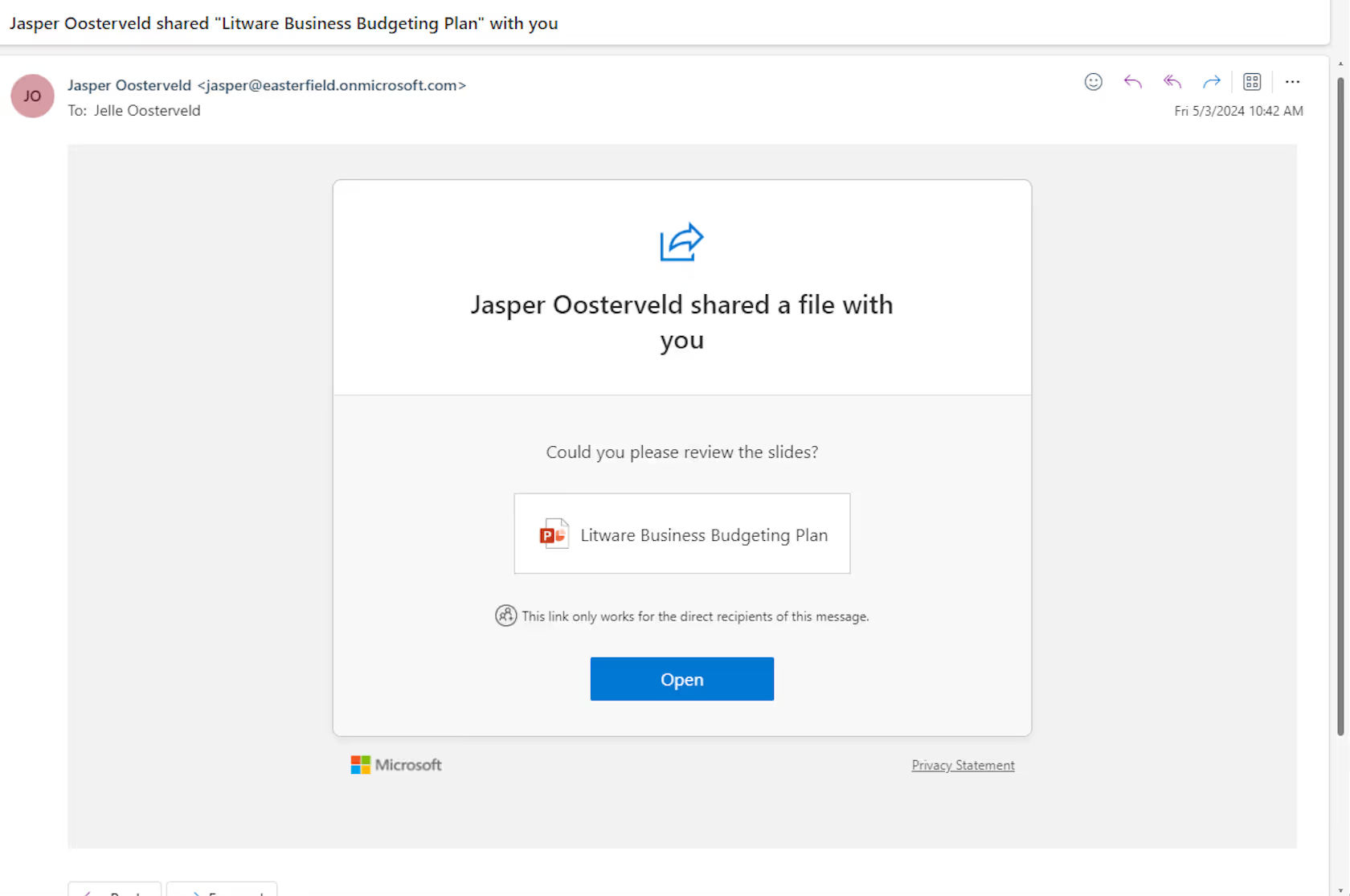
In case you share a file with an external person, you receive an e-mail when the link has been opened:
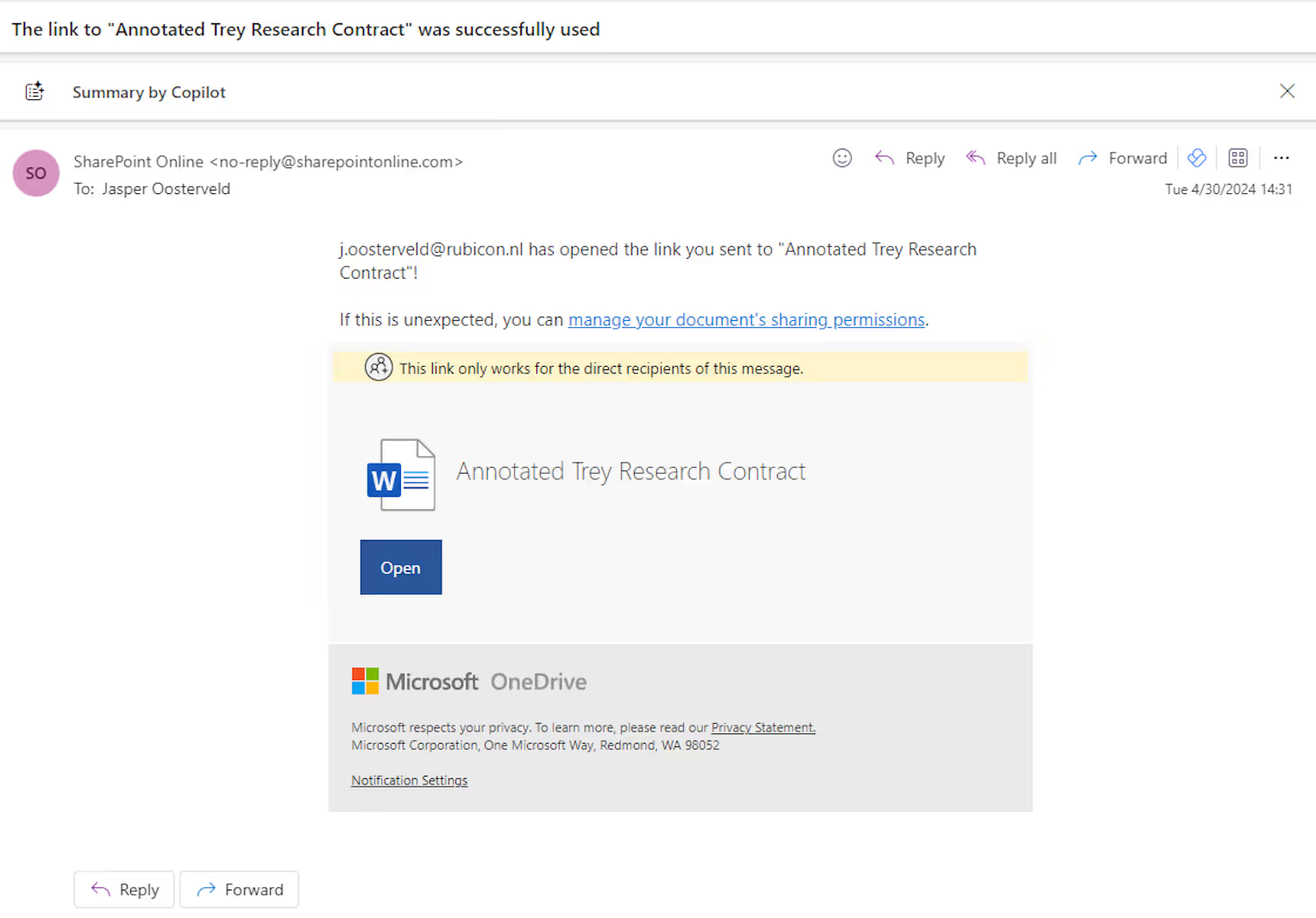
Pretty handy in case a document accidentally is shared with an external person. You can change the notification settings by clicking on the link in the e-mail:
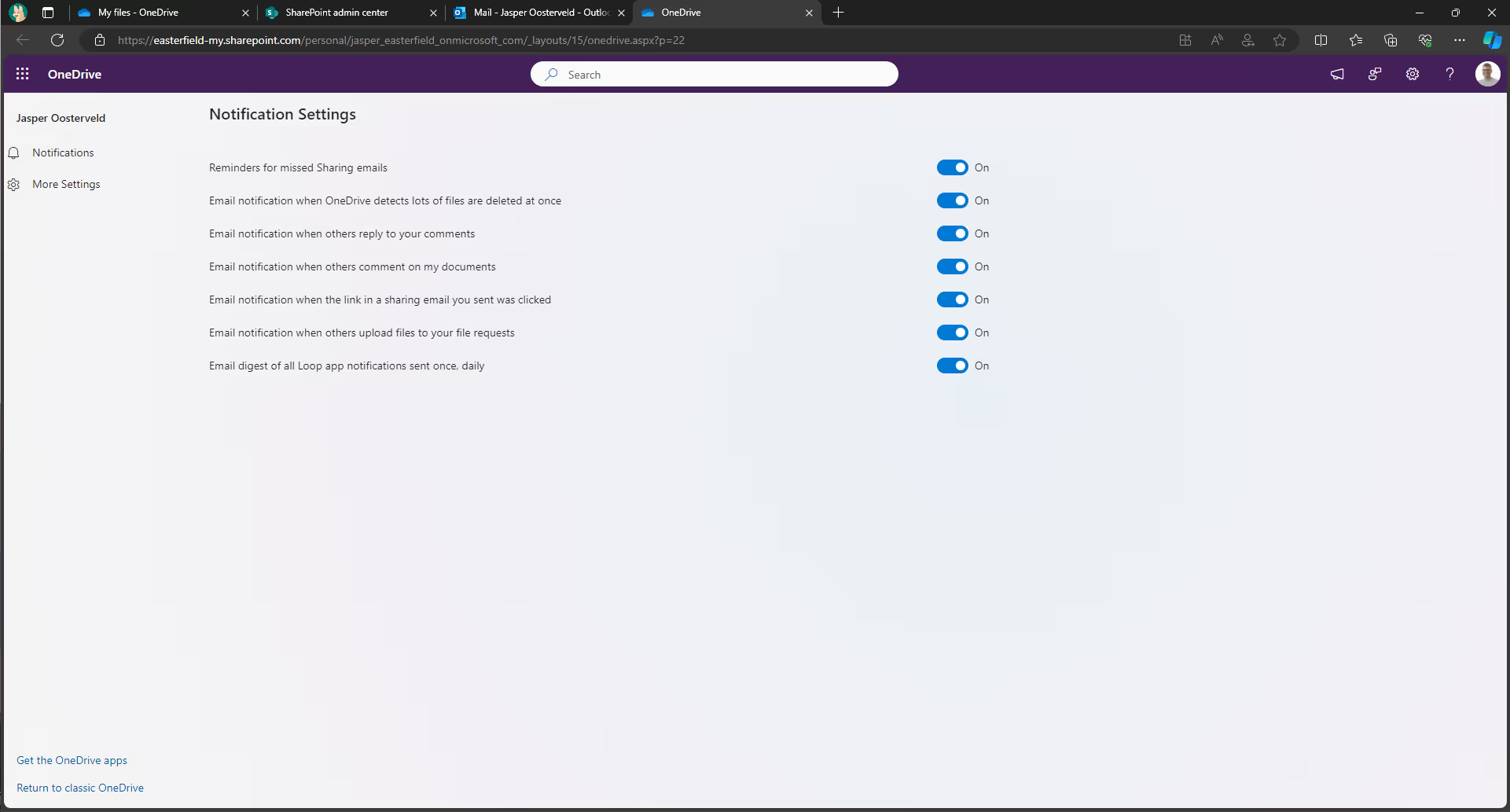
Managing content in your shared OneDrive account
The Shared section of your OneDrive lists all of the content you’re currently sharing as well as content shared with you by others:
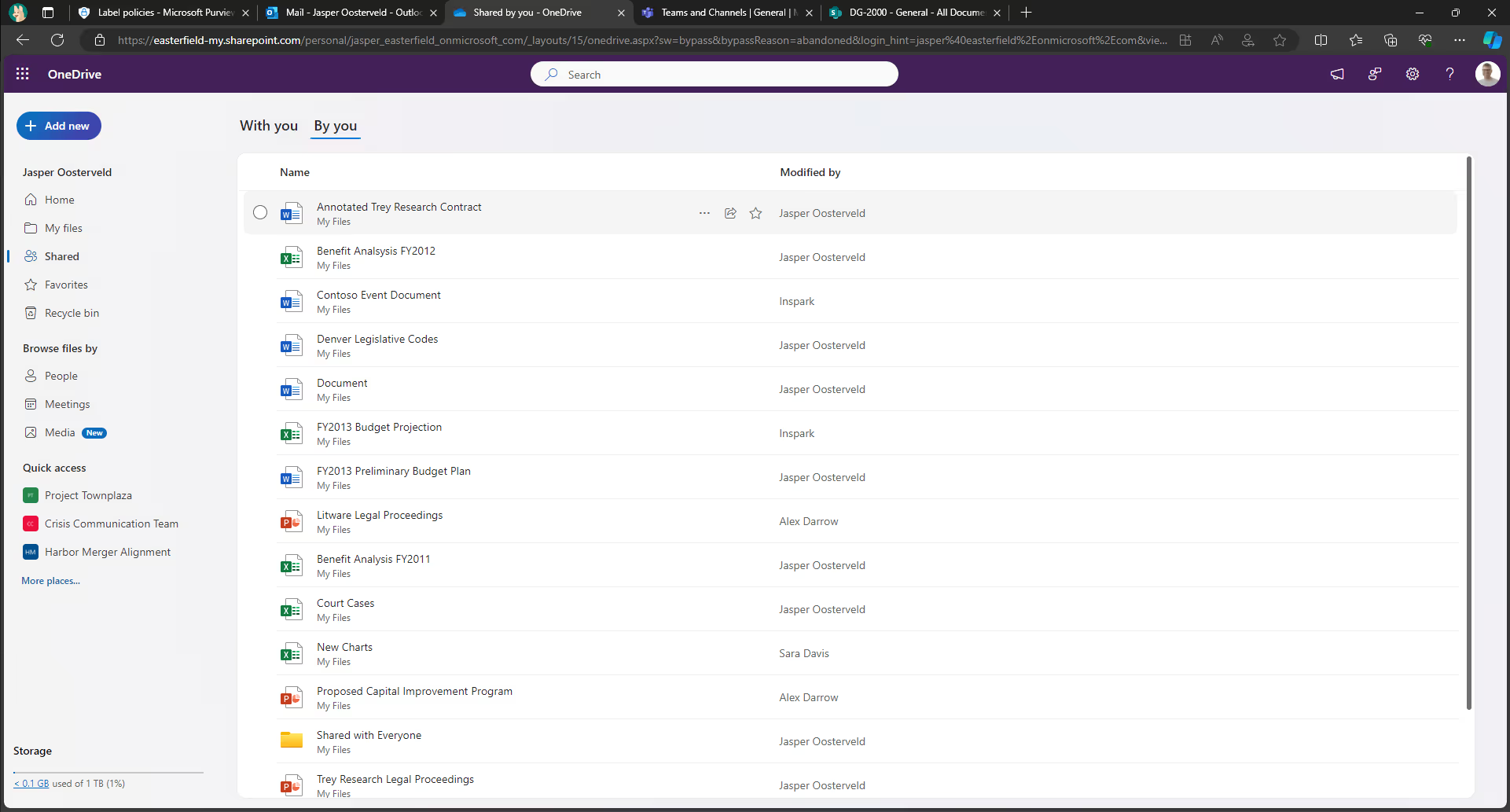
Don’t need to share that presentation anymore? Make it private again with a few clicks:
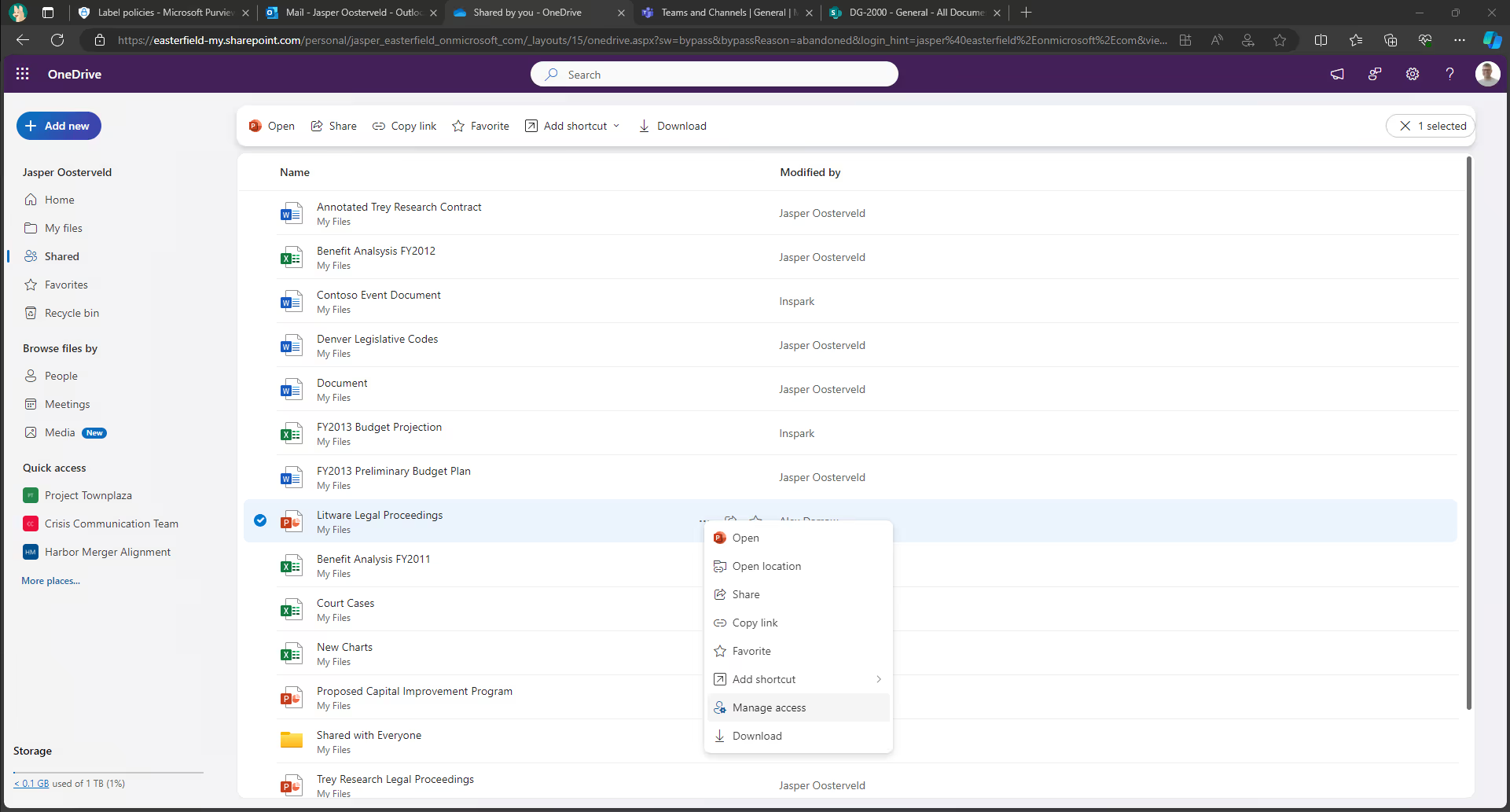
The Manage Access menu opens:
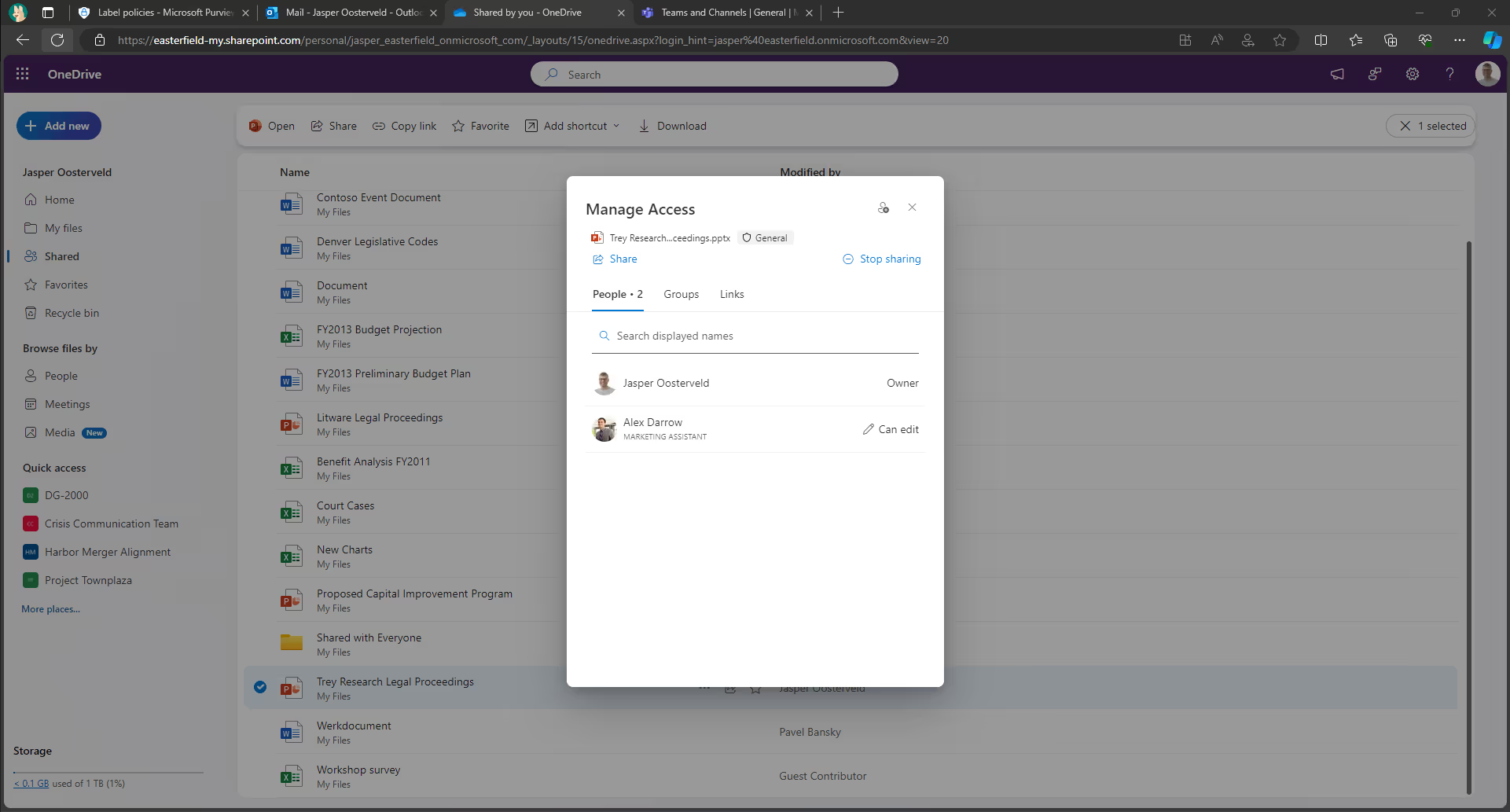
You can now change the sharing link from Edit to View only (or vice versa) or stop sharing it entirely.
Copy link or Share link?
I used the Share button to share the presentation, but you may have noticed that there’s also a Copy link button. The main difference between the two is that no notification email will be sent if you choose: Copy link. Use this option to generate a sharing link that you can manually paste into an email or a chat. You can manage the link within the Manage access window:
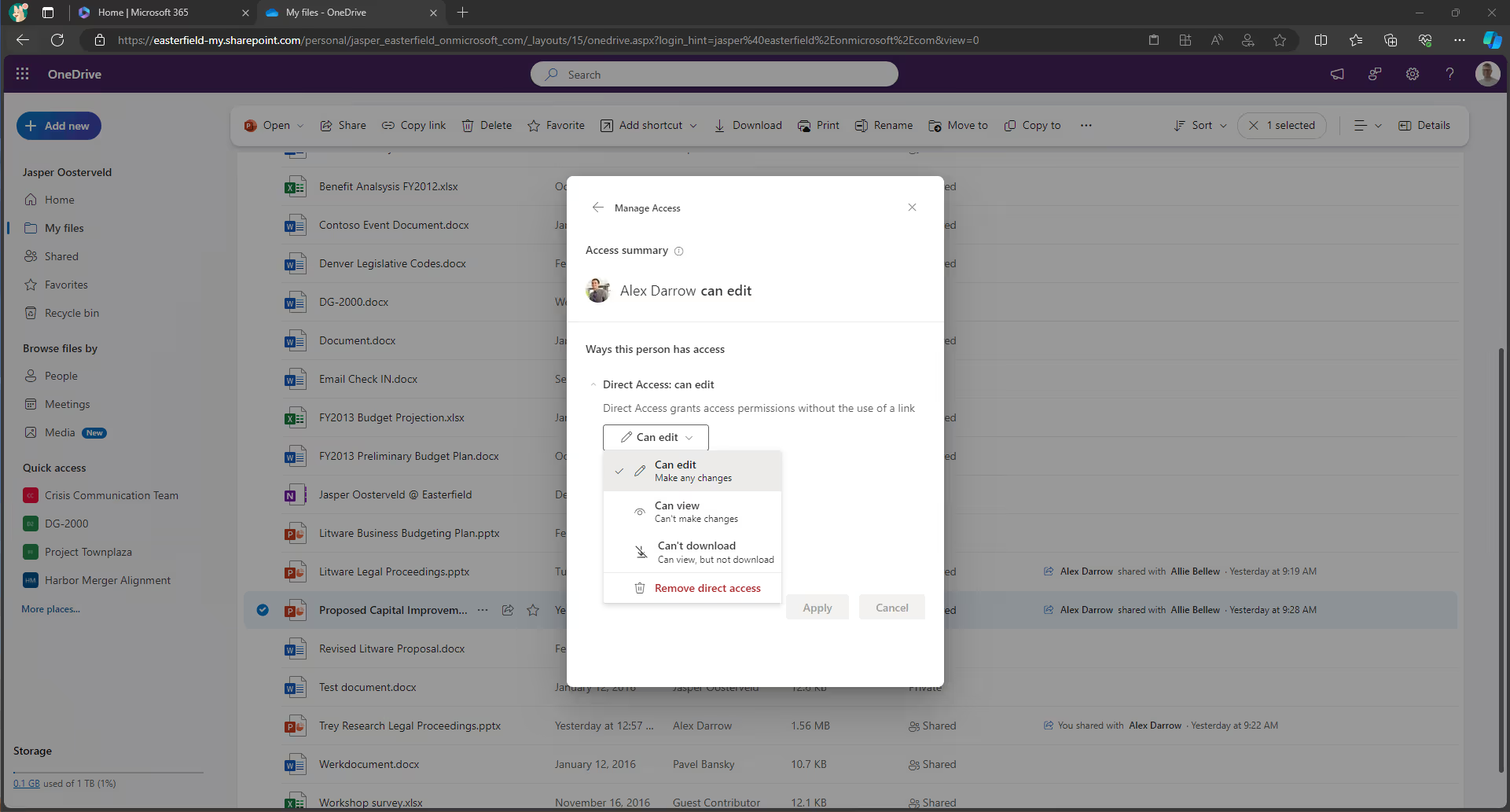
Windows File Explorer: a crucial OneDrive adoption driver
Although the browser experience offers many advantages, File Explorer is crucial for successful OneDrive adoption. For many years, business users worked with their content within File Explorer.
Those were the days when your content was stored in My Documents or a local file share. You would use File Explorer daily to work with your files.
For some users, being forced to work from the browser is a step too far. I encountered this issue in multiple adoption workshops and training sessions. I highly recommend promoting OneDrive Files On-Demand, a powerful feature that’s great for increasing OneDrive adoption.
With this feature enabled, you can view and work with your files directly from File Explorer without downloading them onto your device.
Let's take a look:
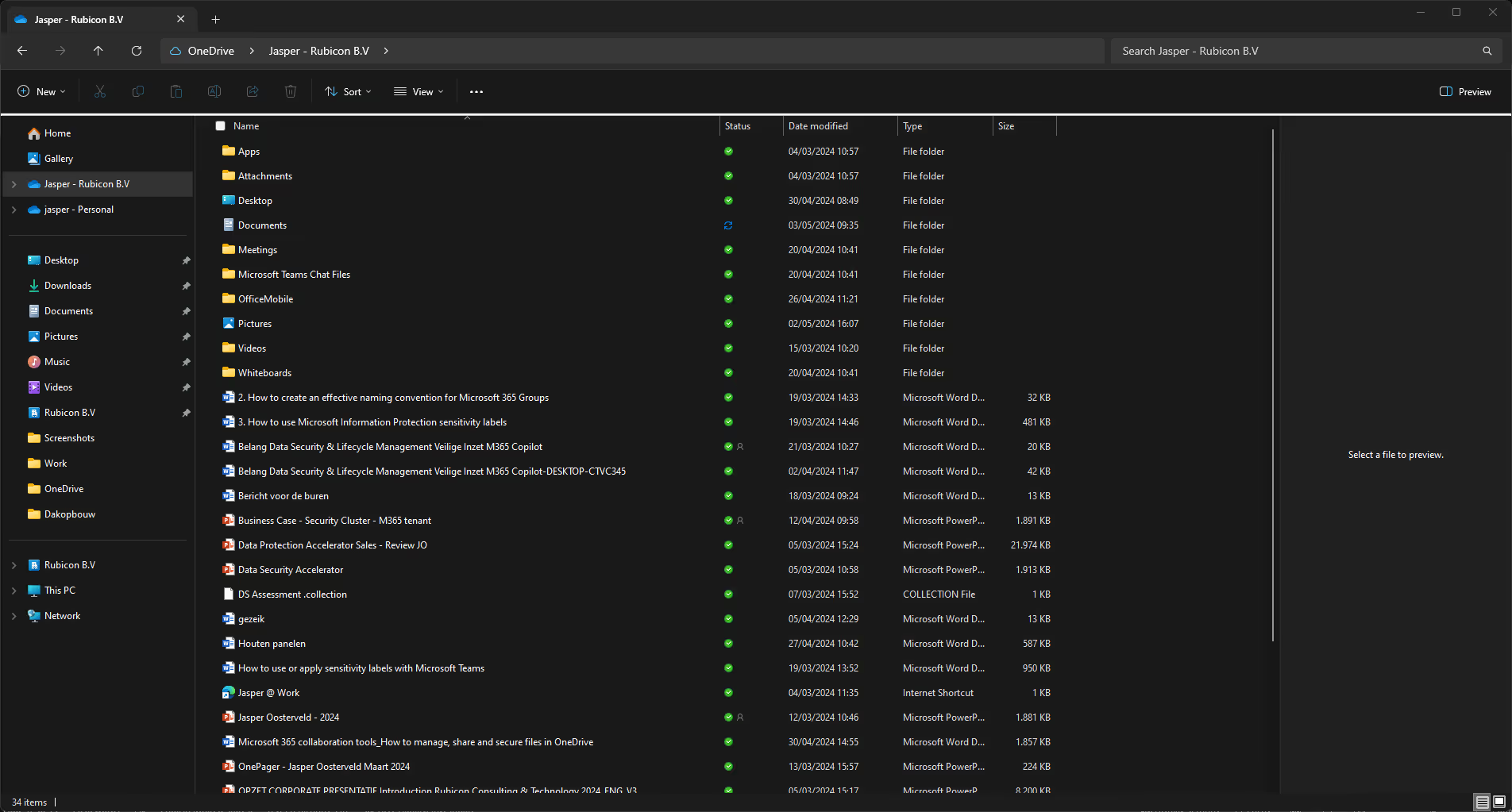
You only have to explain three icons in the status field:
- Cloud: Files marked with the cloud icon don’t occupy your computer's space. Every online-only file in File Explorer will be marked with this icon and won’t be downloaded to your device until it’s opened. Online-only files can only be accessed from a device that’s connected to the internet.
- White circle with a green checkmark: When you open an online-only file, it downloads to your device and becomes locally available. You can open a locally available file anytime, even without internet access. If you need more space, you can change the file back to online only. Just right-click the file and select Free up space.
- Green circle with a white checkmark: This icon will only be assigned to files you mark as Always keep on this device. These always-available files download to your device and take up space, but they’re always there for you, even when you’re offline.
The business user decides which files he or she wants to have accessible with just one click:

Looking back at our marketing scenario, you can share a file within File Explorer:
The sharing experience is exactly the same as within the browser. Awesome! However, you won't find the following features when working within Windows File Explorer:
- Recent files: Overview of recently used files within OneDrive
- Shared: Overview of your shared files and files shared with you
- Favorites: Overview of your files marked as favorites
- Recycle Bin: Restore your deleted files within 90 days
- Browse files: Find files from colleagues, your meetings, and media
- Quick access: Work with files from your SharePoint team sites from within OneDrive
- OneDrive Restore: Hit by ransomware? This option gives you 30 days to restore your OneDrive content
Apart from the Recycle Bin and Shared views, you aren’t really missing anything when working from File Explorer. How can you combine the File Explorer and OneDrive Browser? I start with teaching business users the basics in File Explorer—things like:
- File sharing
- File management (creating, modifying, moving, copying and deleting)
- Co-authoring files
Once users have mastered these starter skills, I move on to the browser—baby steps.
OneDrive external sharing
We can keep this section short because there isn’t much difference between internal and external sharing from an end-user standpoint. However, the recipient’s experience will differ slightly depending on whether the file was shared internally or externally. External recipients will receive an email containing a link to the shared content.

Clicking the link will prompt the following dialogue:
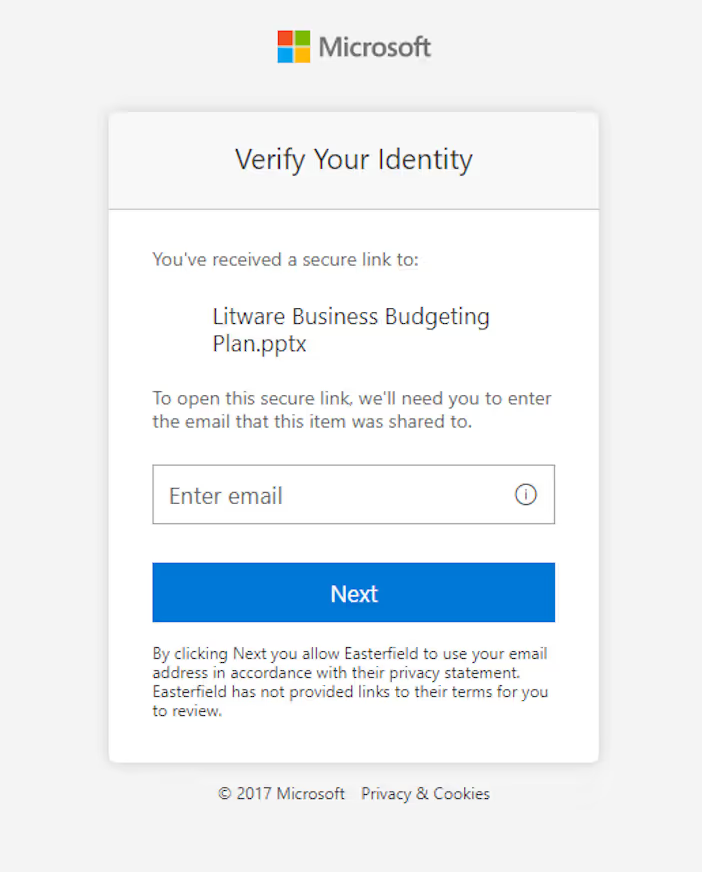
Once the recipient enters their email address, they’ll see the following:

This is an additional security step used to verify the identity of the external recipient.
Keeping your OneDrive secure
Content stored in OneDrive has fewer options for oversight compared to content stored on a SharePoint team site. That's because there isn't any social control.
People working on a project can tell other collaborators not to store a certain file, but there’s no way to ensure that file doesn’t end up in someone’s personal OneDrive. Your users are allowed to share content internally and externally, and there’s nothing inherently wrong with that—provided you have the proper safeguards in place to secure the content and prevent critical data breaches.
Governance for OneDrive
Governance for OneDrive establishes rules for managing and accessing files securely. It controls permissions, tracks changes, and enforces compliance with company policies. This ensures data stays organized and protected.
Establishing a strong governance framework is important for securing your OneDrive content. The following features are essential for OneDrive security:
- Microsoft Purview Information Protection and Data Loss Prevention
- Mobile Device Management (MDM) and Mobile Application Management (MAM)
Here’s an overview of these tools; I’ll discuss them in more detail in a future post.
Microsoft Purview Information Protection and Data Loss Prevention
Microsoft Purview watches over the sensitive information you store in OneDrive. Traditionally, managing and protecting data across different Microsoft 365 applications can be a scattered mess. Microsoft Purview cuts through that chaos by offering a unified view of your OneDrive content. This unified view helps you to classify and safeguard sensitive files with features like Data Loss Prevention (DLP) policies.
DLP acts like a security fence, automatically identifying and protecting critical documents based on your defined rules. Microsoft Purview Information Protection & Data Loss Prevention keeps your OneDrive data organized, protected, and ready for secure collaboration.
Mobile Device Management (MDM) and Mobile Application Management (MAM)
Working from mobile devices is an essential part of the modern workplace. The OneDrive app is quite excellent and offers many advantages for your employees, allowing them to access their work, personal, and SharePoint files on the go.
That said, there is always a risk of employees losing their mobile devices, which would leave potentially sensitive content exposed. Set up Basic Mobility and Security lets you wipe compromised company devices remotely.
Does your company have a bring-your-own-device policy? In this case, I highly recommend enabling Mobile Application Management with Intune. This allows your employees to work with company content securely. If a user loses their personal device, MAM ensures that only the OneDrive app will be deleted, leaving personal content, such as images, untouched.
OneDrive: Now a viable collaboration tool
OneDrive has come from a dark place. I won’t get into the details, but suffice it to say that there was a time when I advised clients against using OneDrive. Those days are finally behind us.
OneDrive is an excellent content collaboration service within Microsoft 365. It allows users to store files, share content when needed, and collaborate on documents with colleagues or external users.
In the next part of the series, we’ll take a look at how Microsoft Teams fits into your content collaboration workflow. Check it out now!
.jpg)


.svg)
%20(1).avif)







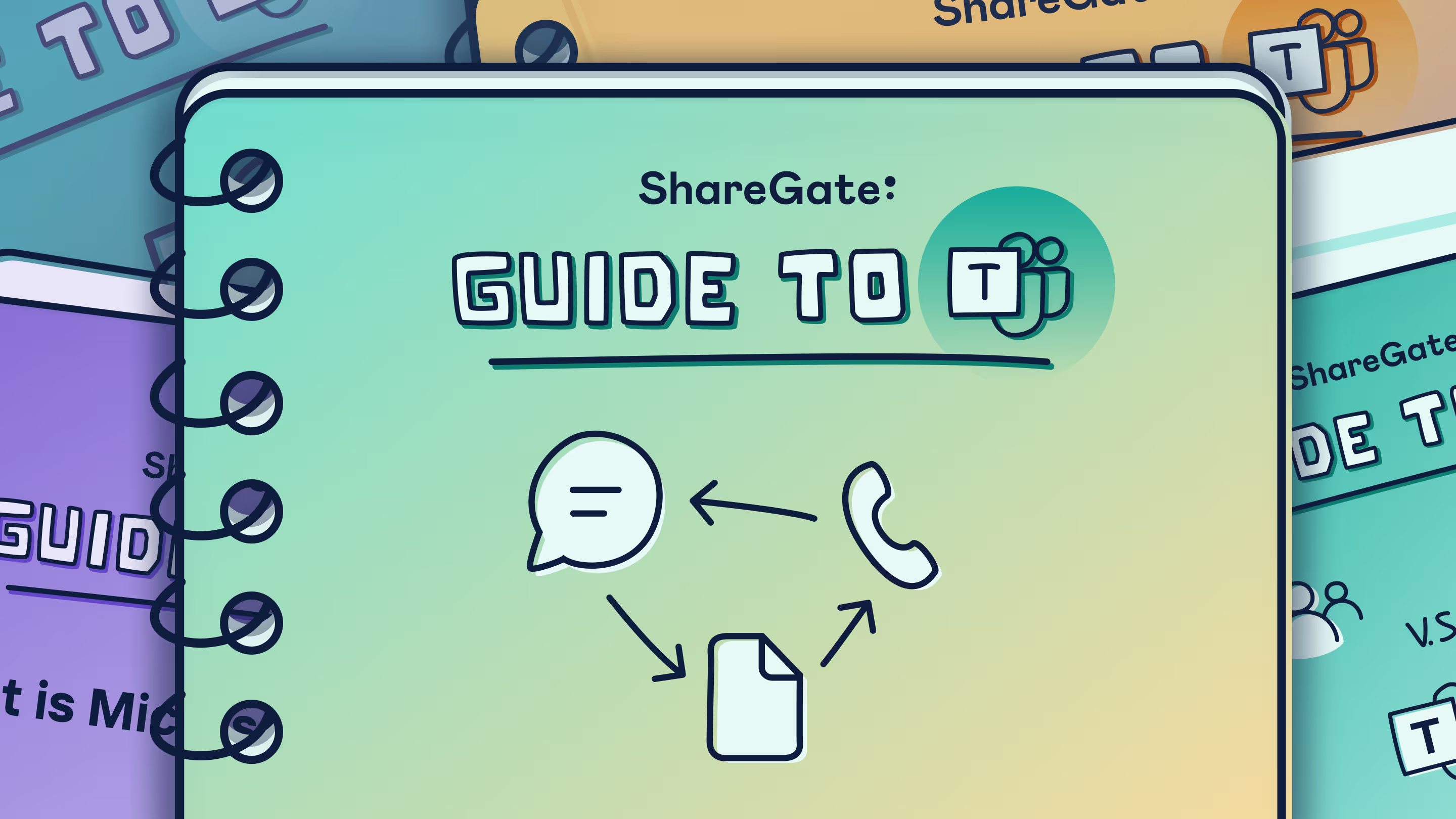




.jpg)


.png)

